Speaker
Description
The EIC’s ability to collide high-energy electron beams with high-energy ion beams will provide access to those regions in the nucleon and nuclei where their structure is dominated by gluons. Moreover, polarized beams in the EIC will give unprecedented access to the spatial and spin structure of gluons and sea-quarks in the proton and light nuclei.
The EIC will be an unprecedented collider with luminosities 2-3 orders of magnitude higher than that at HERA over a very wide range of center-of-mass energies from 20 up to 100-140 GeV, while accommodating highly polarized (~70%) electron and nucleon beams. Equally demanding are the requirements for physics detector(s) that will be needed to carry out the compelling EIC physics program: hermetic coverage in tracking, calorimetry and particle ID within a wide pseudorapidity range, substantial angular and momentum acceptance in the hadron-going direction, as well as high quality hadronic calorimetry among others.
In my talk I will give an overview of the detector requirements and current general-purpose detector concepts, providing a connection between physics requirements, simulations and the ongoing EIC Detector R&D Program.
